Collection of publications in electronics 2013-2025
Posted by dipl.Ing. Zoltán Kiss 2015-2025 - Endrich Bauelemente Vertriebs GmbH.
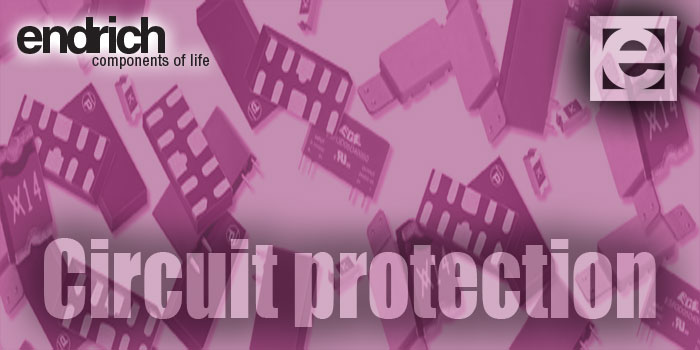
Transient overvoltage protection
In electrical circuit engineering the main target is to provide the desired functionality of the product being developed. All engineers take a good care of side affects generated by the used elements themselves, such as heat problems are eliminated by good heat dissipation management, high frequency radiation like EMI or RFI , possible harmonic distortions are limited. However there are external affects that can significantly influence the lifetime of the electric circuit, such as overcurrent or overvoltage of the driving lines. Almost all electric boards should contain some elements, which - in normal circumstances - should be „invisible”, but being able to protect the circuit in case of unexpected events like high voltage transients. These transients are mainly caused by sudden load changes of connected circuits, power source fluctuations, electronic disturbances of coupled cables, switching events, lightning or ESD. This abstract is about discussing the possible circuit protections to suppress transient overvoltage with cost optimized solutions.

Over voltage protection with TVS devices
When the voltage of the input of an electric circuit or element raises above the level it is maximum rated at, it may be overstressing it depending on the overvoltage event’s duration, which can be a transient spike, or a permanent surge. These overvoltage events may be resulted by natural sources like lighting or human origin, like electrostatic discharge, switching of high inductive loads or operating circuits generating electromagnetic interference. Effective protection against overvoltage is essential task next to the functional design. Avalanche Breakdown Diodes (Transient Voltage Suppressor Diodes) from Protek Devices offer a great flexibility in circuit over-voltage protection, as available from 2.8V to 400 Volts, and power rating of from 80 Watts to 30 kWatts.

Effective over-voltage protection solutions for the high speed I/O ports
Electrostatic discharge (ESD) transients are potential threats to the I/O prots of electric circuits, which challenges designers to incorporate an adequate overvoltage protection. The applied soultion however must not have any affect to the operation under normal circumstances and must not decrease the data transmission rate. The possibilities of protection with TVSD devices against ESD caused over voltage have been detailed in the previous paper, this article is more about to give an overview of the application examples, industrial standards and dedicated protective solutions for the most often used communication ports, like USB, HDMI and Ethernet.

Current regulative diodes
There are a number of electronic equipments, which require stabile, regulated supply current. An effective solution could be provided by using Current Regulative Diodes (CRDs). There is a second naming in the technical literature being used: Current Limiting Diodes, that represents the same component. CRD is a special diode which provides constant current to an electric circuit, even when input voltage provided by the power supply or load impedance fluctuations occure. CRD is used for current stabilization and current limiting.

Li-ion batteries and their circuit protection solutions
Lithium-ion is one of the most popular rechargeable battery technology providing energy for today’s consumer applications. Its perfect energy density, not remarkable memory-effect, slow loss of charge in standby mode and the light weight makes Li-ion battery to be used for energy storage for many electric vehicles, especially to provide alternative solution for heavy lead acid batteries. In order to preserve the long cycle life, the very sensitive lithium cells should be protected against overcurrent and overtemperature conditions, that may be caused by short circuit of terminals, abusive charging or changing circuit failures. In this article we would like to make an overview about the lithium-ion technology via introducing a leading manufacturer EVE Battery’s line up as well as the possible circuit protection solutions from TE Circuit protection.

Overvoltage protection of indoor and outdoor luminaires
The LED based indoor and outdoor lighting technology is one of the most dynamically developing target area of electronic research and design. According to recent statements of LEDinside, Europe has a leading position with its 23% share in this sector. The most important task of developers - in addition to maximizing the available luminous intensity and efficiency-, is to achieve the longest lifetime with the most reliable design, which requires to take in account external environmental factors that have the strongest and most critical influence to durability. Crucial environmental values like ambient temperature, supply current and voltage should be kept in a certain safety range. This is the reason not to underestimate the necessity of designing in the proper circuit protection.

Primary lithium metal batteries from leading manufacturer EVE Battery
To find energizing solution for potable electronics devices is a challenge, it is definitively a serious consideration to select the right primary battery no matter if we design the device or we are the user of device. The disposable batteries available on the market today are manufactured in various form factors, and usually their chemical systems are completely different. The old carbon-zinc batteries have been replaced by well know alkaline batteries, and today the focus of engineers turn to the lithium batteries, that are lightweight, more durable and chargeable than everyday batteries. To support selection of lithium disposable batteries, we try to overview the technical possibilities, the technical features and suggested applications of the different types through the product range of the World leading lithium metal primary battery manufacturer EVE Energy.

SPC and ES energy storage systems – EVE Battery
Electronics devices which are designed for applications that require short term operation and stay long be in stand-by mode usually need huge energy impulse immediately after wake-up command. These can be emergency alarm systems, RFID transponders, GPS tracking devices, smart meters’ read-out electronics or the recently obliged E-CALL systems of passenger vehicles. A stabile voltage, low leakage current battery is required, that can pump huge momentary charge in a short time into the system. These requirements are often realized by integrating different super-capacitors, that have ten or even hundred times higher energy density than normal electrolytic capacitors, their charge and discharge times are also shorter, and tolerate much more cycles that e.g. rechargeable batteries. Supercap’s operation is usually based on electrostatic principle, however there are some special devices, like EVE Energy’s own patented SPC devices, that are featured by chemical working principle They usually do not operate alone, but as a part of one of EVE’s energy storage systems, which is in fact a special battery pack. This paper introduces the advantages of such system.

Load dump protection with PROTEK TVS diodes in automotive electronics
As in the previous paper about automotive overvoltage protection we described, automotive electronics is continuously developing features in order to enhance driving experience, which also challenges circuit protection manufacturers to follow the trends by introducing proper circuit protection solutions. Talking about standard bus systems, infotainment systems, LED based lighting systems and Advanced Driving Assistance systems, like park assist and collision avoidance are all getting more or less common in new cars. Mandatory safety enhancements such as TPMS are also made to increase reliance on electronic technologies within the automotive sector and therefore require dedicated attention from circuit protection point of view. We reviewed earlier the TVS based overvoltage solutions for the most common standard interfaces, in this paper we make a study about solution for one of the most massive overvoltage event, the so called load dump.

Overvoltage protection with PROTEK TVS diodes in automotive electronics
Automotive electronics is maybe the area of the automotive industry, which has developed the most in the last decades. It’s been almost 50 busy years since the first engine control unit (ECU) was placed in the car, and today there are dozens of microprocessor controlled systems in each vehicle. Car manufacturers keep on designing more and more IC based systems to provide enhanced features, which also challenge circuit protection manufacturers to follow the trends by introducing proper solutions to decrease servicing and warranty costs. Therefore, proper circuit protection is an important factor of any automotive design process.

The world's smallest transistor output optocoupler
Nowadays, it is exceptional when an electronic part distributor gets also involved in component development. However, Endrich Bauelemente GmbH has engaged in it shoulder to shoulder with an excellent manufacturer (CT Micro) not yet widely known. The developer society shows great expectation for stepping forward in the world of optocouplers despite of the silence in recent decades. The target was to develop the thinnest device ever made and it has been successfully achieved using the CT MICRO DoubleMolded CoPlanar( DMC™) technology. The technical parameters have been defined by Phoenyx Contact, a client of Endrich being a market leader in its own field. In addition to the small size the extremely low profile was the most important requirement, 25% lower than the 2 mm high MiniFlat (SOP) packaging and 60% lower than the most common 4PDIP (DIL) packaging. CTP17 has been warmly welcomed by the visitors of the Electronica exhibition inMunich.
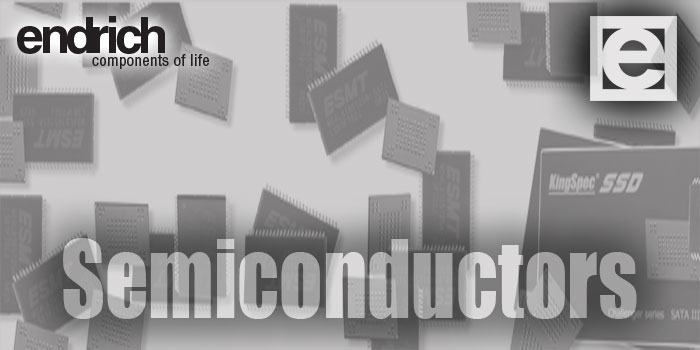
SSD – Solid State Drives (RunCore)
It may be well known by everyone that retailers were raising their prices on Hard Drives because flooding in Thailand had shutdown a number of key production facilities. As forecasted, it could take up to a year more for the industry to return to pre-flood production levels, till then there is a remarkable shortage and price increase on the traditional mechanical hard drive market. This forced a lot of experts all around the World to think whether to buy 120 GB super fast storage SSD or 1 TB of traditional slower storage hard drive for the same price, which was never so closed to each other. In this article we try to summarize the key factors, which characterize the SSD drive technology and briefly compare it to the traditional hard drive technology.

nvSRAM – the non-volatile SRAM memory
Memories are essential elements of today’s consumer electronics devices. These could be volatile versions (SRAM, DRAM), that are losing contents when switched off, and non volatile versions, that could retain data when power loss (EEPROM, FLASH). Combination of the two technologies can provide the advantage of fast memory solution with non-volatility. One of the possible choice is the nvSRAM technology, that we will introduce in this article based on the solutions provided by ANVO-Systems.

DC-DC switching power supply regulators from New Japan Radio
DC/DC converters are essential elements of today’s battery driven consumer electronics devices, which often contain subsystems with own level of required supply voltage. Mainly the lack of the available space forces designers not to use different batteries but use voltage converters to produce various voltages available, sometimes even higher than the battery voltage, and often provide regulated output, which is important as the battery voltage decreases by losing the stored power. DCDC converters, which convert the input voltage to a lower level are called stepdown or buck converters, the ones producing higher voltage than the battery voltage are called step up or boost converters.

GigaDevice 32 bit ARMCortex microcontrollers (1.)
ARM (Advanced Reduced Instruction Set Machine) is the industry's leading microprocessor technology, offering the widest range of microprocessor cores to address the performance, power and cost requirements for almost all application markets. With more than 90 billion processors manufactured, the ARM technology is motor of the embedded computers’ World helping solutions to be born and businesses to operate. There are many licensed silicon vendors, software solution providers on this market, but a cost effective fareastern licensed player with its own cost optimized solution helps to keep Worldwide prices on a reasonable lower level. GigaDevice, the well know manufacturer of Flash memories also takes a piece of the cake of ARM® Cortex®M3 technology. Their GD32® family integrates features to simplify system design and provide customers with wide range of comprehensive and superior cost effective MCU portfolios with proven technology and great innovation. In the first part of the series of articles we review the microcontroller architecture, later we show some examples based on evaluation board available for the device.

GigaDevice 32 bit ARMCortex microcontrollers (2.)
In the first part of the series of these articles we reviewed the architecture of the GigaDevice GD32™ARM® Cortex®M3 and CortexM4 RISC MCU families, in this paper we are going to introduce the evaluation boards available for testing the microcontrollers and also a possible way to start working with them using a popular development system called CrossStudio for ARM 4.1. As an example in a later issue we will create a simple code operating a bicolor LED with different blinking frequencies.

GigaDevice 32 bit ARMCortex microcontrollers (3.)
In the first part of the series of these articles we reviewed the architecture of the GigaDevice GD32™ARM® Cortex® RISC MCU families, in the second part of the series the evaluation boards for testing the microcontrollers have been introduced. In this paper we show a possible way to start working with them using a popular development system called CrossStudio for ARM 4.1. and show some software examples using the MCU features.

Capacitive touch control
The widespread use of smartphones and tablets has made the touch control common and self-evident and forcing developers to replace mechanical user interfaces (switches pushbuttons) with electronic versions in an increasing number of areas of electronics, thus avoiding failures due to wear out or fatigue and also utilizing on the innovative gesture control provided by the technology. Remote controls, home appliances, intercoms, consumer electronics are increasingly featured with such human-machine interface solutions, which can be implemented simply with capacitive touch control technology. A further advantage of this technology is that it provides the device with greater resistance to environmental influences (water, dust, etc.), since it is not usually necessary to open the housing. In this article, we review the physical foundations and capabilities of capacitive touch and proximity sensing.
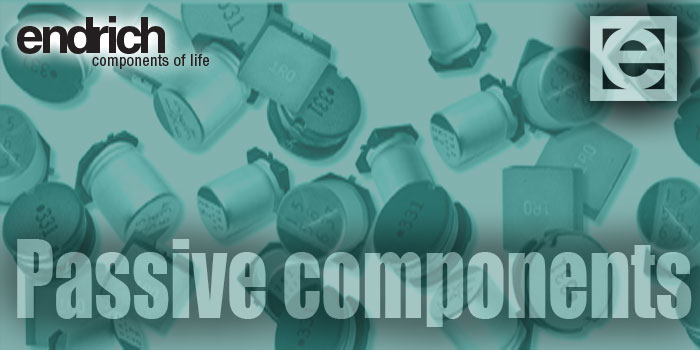
Electrolytic capacitor essentials
Aluminium Electrolytic Capacitors are essential elements for almost all electronic circuits. The constant growth of using electronics in every day life has driven the usage of these components. In most of the applications the lifetime of the electronic device is closely linked to the lifetime of the E-caps inside. In order to provide reliable operation for the electric circuit over a definitive period, a clear knowledge of the properties of the capacitors is mandatory. In this article we try to give an overview of the main features of the capacitors, the lifetime issues and will introduce special capacitor families with special properties and other non-wet electrolyte solutions from SUN Electronics Industries and Sanyo.

Industrial purpose SMD power inductors
The arising demand for SMD power inductors is mostly driven by requests arising consumer applications like camera, mobile phone, notebook PCs, however standard industrial applications have also special requirements, that has to be fulfilled. Electrical power supply circuits’ lines always need power inductors as well as chokes in order to accumulate and store electrical energy in the form of magnetic energy (power inductor) and to cut high frequency AC current components (choke). In system design it is also necessary to filter EMI noise or provide low signal losses, therefore power inductors need to be used. For battery operated systems the energy storage feature of these inductors is also essential. The basic condition of designing an outstanding product, is the deep knowledge and understanding the characteristics of the components used in order to make the right choice. This article gives a brief overview of the technologies used by the popular manufacturer ABC distributed by Endrich in Europe.

Development of ABC coil families – the new QS series for automotive industry
The arising demand for SMD power inductors is mostly driven by requests arising consumer applications like camera, mobile phone, notebook PCs, however standard industrial applications have also special requirements, that has to be fulfilled. To design quality equipments engineers must use quality components, so very important measures in case of inductors are the maximum power can be concentrated into the given volume, the high saturation current, and in order to keep losses minimized and efficiency high, the low DC resistance of the coil. In addition to the technical properties also the economical issues has to be considered, like the production costs, that are continueously increasing in China due to the fact the hand made parts involve more and more human resources, while wages are increasing. This trend affecs all manufacturers, who does not have fully automated production. This paper is about to introduce the various technological steps done by leading taiwanese manufacturer of inductors ABC to answer challenges of today’s trends.

Thin film precision resistor families – SUSUMU
Design engineers should be very careful when selecting precision resistors to be used in electric circuits. The low initial tolerance – the maximum difference between the defined and the measured resistance value after component production – provides adequate functionality to the circuit, while precisely kept resistance in time and due to environmental circumstances - such as temperature rise , shock or vibration - is necessary to provide stability of performance during lifetime of the electronic product. Digital electronics in general are less sensitive for resistor tolerances, but analog, especially measuring circuits can fail working right, loosing their stability when the applied resistors are not keeping their values. In this paper we review those factors, that have effect on system stability and introduce some interesting precision resistor families from Japanese leading manufacturer SUSUMU.

Ceramic heat sinks for cooling of LEDs & semiconductors drivers – ABC Taiwan
Electric components, such as LEDs or semiconductor elements of their drivers generate heat, and their lifetime, reliability and efficiency highly depend on the adequate cooling, which should remove and dissipate the heat as fast as possible. As the efficiency is a key factor, it is not possible to use active cooling, but heat sinks. Metal heat sinks have a number of disadvantages in comparison to microporous ceramic heat sinks, like their weight, higher thermal capacity and lower active surface. Ceramic incorporates two crucial characteristics of heat sinks, electrical insulation and energy disperse ability. It possesses good electromagnetic compatibility and in addition it is UV and corrosion resistant. This paper shows facts through the products of ABC Taiwan Electronics.

Parameters of current–sensing resistors
In order to measure the current in an electric circuit, precisely kept low resistance current sensing chip resistors should be used and the voltage drop over the component is measured. The required characteristics are tight initial tolerance, small TCR, high nominal power and small size. There are however other important factors, like the affect of self heating, the material of the resistive element and on high frequencies the equivalent series inductance (ESL) to take in account. In this article we will discuss these factors and their role to be able to make a precise current measurement with SUSUMU’s unique KRL series of shunt resistors.

Voltage characteristic of capacitors
Very often the multi layer ceramic capacitors (MLCCs) are responsible of unexpected noise appearance in electric circuits. The most usual reason of this negative behavior is the DC biasdependence. The more the applied voltage is approaching the rated voltage, the less effective capacitance the capacitor has. This phenomenon is called the voltage characteristics of the device, and capacitors are said to have good voltage characteristics, when the change is small. This article we are going to review the reasons leading to this effect.

Ripple cancellation with low ESR polymer capacitors
To produce different voltage levels out of the battery voltage could be done on several ways, like using resistor based voltage dividers, or linear regulators, but these solutions can only provide lower level of voltages and the efficiency is low, as − if the voltage drop is high and the current is large − , the excess power will be lost by dissipating remarkable heat. Better to use today switching mode DC/DC converters, which temporarily storing energy in magnetic or electric storage components and releasing this energy to result different voltage level on the output. The efficiency will be remarkable higher resulting better battery lifetime at the end. The high frequency swithching however causes voltage ripple on the output, that has to be minimized in order to avoid mailfunctioning of the supplied device. Most obvious solution is to use a fiter capactor for smoothing ripple voltage on output, which is possible by using e.g. polymer capacitors.
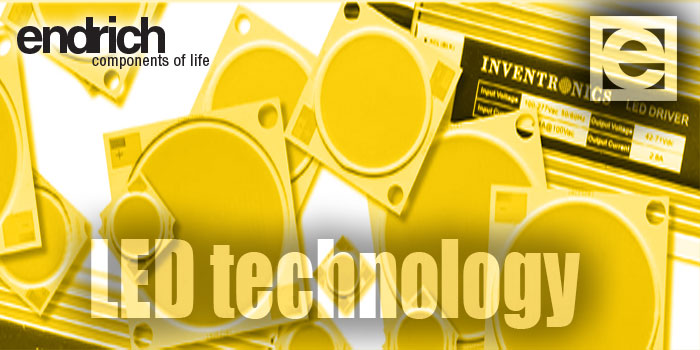
Photometric principles used in LED classification - binning
The photometry is the measurement of the electromagnetic radiation by means of the response of the human eye, which makes it changing with wavelength and different person to person. In order to provide a consistent basis for principles of photometry, international standards define observer functions that can be used. In this abstract we are going to give an overview of definitions used in the LED lighting to describe the light output of the devices, we make a summary on optical definitions (like color temperature, color rendering, brightness) and electrical properties ( e.g. forward voltage), that LED manufacturers base their classification on by means of binning.

Directly on mains voltage - alternative to PSUs
Suitable circuits allow LEDs to be operated directly on mains voltage without a power supply unit. The solution is scalable and space saving. Its also allows LEDs to be dimmed evenly and without flickering. The electric light bulb served us well for over 100 years since it was invented by Edison in 1879. Light emitting diodes were discovered as luminescent crystals about 60 years ago and have made triumphant progress since then. Power supply units for operating LEDs have also been available for many years. But since the invention of ICs which can be operated directly with 230 V AC while supplying LEDs with direct current, the question arises whether conventional power supply units are still required. LED lights operated with alternating current have been successfully sold as series produced items for many years. In the beginning these were Retrofit GU10 lamps with 8 to 10 W, followed by built in spotlights and floodlights with 120W and more.

Alternative circuits for LEDs with 230 V AC driver
Designing a new LED luminaire poses great challenges today – including selecting the right LEDs and a suitable power supply unit. The new AC technology has now substantially simplified this process: It allows direct control of the LEDs with 230 V AC and generates flicker-free light with good dimming properties. Having to develop a dedicated power supply unit can significantly delay a new project. It is much easier to use AC technology with direct control through 230 V AC – with obvious advantages: In addition to considerable cost reductions, LEDs from different manufacturers can be used and combined in one circuit. It is also possible to use a much smaller power supply unit which can be integrated unobtrusively into any housing.

LED drivers – reliability, and performance factors
Today’s general lighting industry targets more and more LED based solutions. The fixtures’ performance, reliability and also the return of investment are significantly influenced by the quality of the LED driver. According to failure analysis of LED lighting fixtures, the results show fewer than 5% probability of LED chip failures, other 5% may be the fault of other elements and 90% of cases originate from LED driver failures. To take critical performance factors in consideration, – as well as understanding the reliability scores, such as MTBF and lifetime – are necessary to be able to select the right driver from the wide range of available solutions on the market. This paper tries to summarize some of the measures, and point out possible issues of a driver in order to help fixture designers to specify right solutions for the optimum financial and the operational requirements.
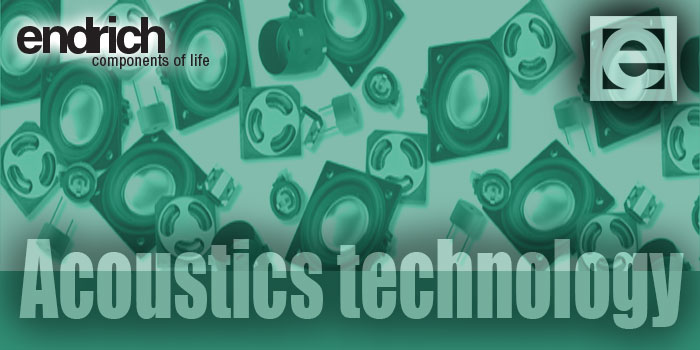
Acoustic I. – Sound generators
Generate a kind of sound is a common requirement in a lot of electronics circuits. All devices, what we call sounders convert electrical energy into mechanical energy that is called acoustic sound energy. It can be used just for signaling some functions with a simple single frequency beep or a certain melody, but could also be neccessary to reproduce human voice or music. For all these purposes the electronic component industry offers many kind of acoustic sound generators.This article is made to give an overview of the different sound sources in order to be able to select the right device for the right purpose. By clarifying some definitions, working principles, and application areas engineers have easier way to understand the product portfolio of the acoustics manufacturers.

Acoustics II. – The Phenomenon of „acoustic short circuit"
When using dynamic loudspeaker systems, which transform electrical signals into audible acoustical signals called sound waves, their radiation characteristics, and therefore finally the perceived sound quality will be strongly influenced by the mounting situation in the application device, known as "the acoustic environment". For taking this into account, the size of the device and also as its design should be carefully designed. The specific design should take care of the method of mounting, if it is standalone (like for example a kitchen radio), free flowing (like for example a telephone) or fixed (like a communication column or door phone device). In this paper we are going to describe the problems occur in free-cone speaker systems, explain the background of the back-to-front cancellation and suggest preventive solutions.
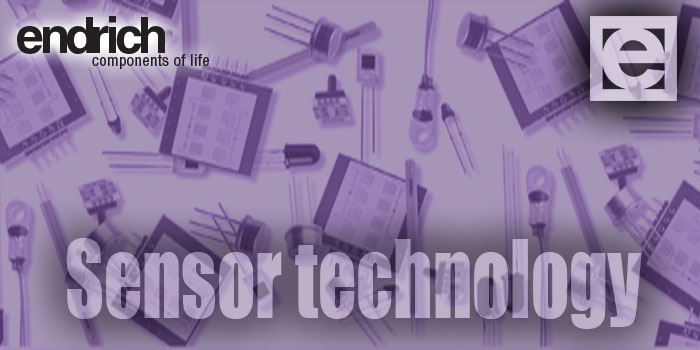
Movement detection in practice – PIR,WaveEye and GridEye sensors
Engineers of general lighting area are focused on designing compact, intelligent and energy efficient systems, which could be realized by adding the feature of automatic switching off, when no human presence is detected. Today these intelligent sensors are mainly based on passive infrared (PIR) technology, that is perfect for detecting human motion with huge amplitude on a large detection area, however not effective with tiny movements, and also unable to distinguish between approaching and leaving of objects. Radar sensors are capable to fulfill many of the tasks PIR sensors cannot solve, but their working principle is also based on movement, and although tiny movements can usually be detected, stationary objects cannot be. As direction sensing is limited to approaching and leaving, special tasks, like counting people entering and leaving a room is not easy possible. People sitting in an office, making no remarkable movement will be considered not present with these devices. Panasonic’s GridEye sensor is based on a thermopile matrix, and acts like a low resolution thermo camera, therefore perfectly suits for presence detection. Evaluating the thermo image by microprocessor based host system more complex observations can be done. Integrating into an intelligent lighting or building automation system, the problems encountered with PIR or radar sensors can be eliminated. This tech paper compares above mentioned technologies.

Movement detection in practice – WaveEye Doppler sensor from New Japan Radio
Engineers of general lighting area are focused on designing compact, intelligent and energy efficient systems, which could be realized by adding the feature of automatic switching off, when no human presence is detected. Today these intelligent sensors are mainly based on passive infrared (PIR) technology, that is perfect for detecting human motion with huge amplitude on a large detection area, however not effective with tiny movements, and also unable to distinguish between approaching and leaving of objects. Radar sensors integrated in an intelligent lighting system could overcome the disadvantages of PIR sensors, being able to detect minor movements, like speaking, typing or even breathing. In the past radar systems could only be set up by the use of expensive, big and heavy components like wave guides. Today, using planar technology, the sensor modules are small, cost effective and robust.

Temperature sensors for different applications
Temperature measurement is one of the most important disciplines in sensor technology. Basically there are contactless and touchcontact measurement methods. This article will make an overview of the possible temperature sensing technologies, but covers in details only the contacting temperature measurement, where the sensor element is in thermal contact with the object of which the temperature has to be measured.

Practical usage of Panasonic GRIDEYE sensor v2.0 – Part 1.
Earlier we compared several movement and presence detection technologies and introduced Panasonic’s GridEye 64 pixels intelligent thermopile array sensor as one of the best options to detect stationary objects. It can be used to detect, count or follow movement of humans, also capable of supporting gesture control. The new generation of tis sensor has been launched, and we would like to draw readers’ attention to this unique technology again.

Practical usage of Panasonic GRIDEYE sensor v2.0 – Part 2.
In the previous article of this series the main features and news of the Panasonic GridEye thermopile matrix sensor have been introduced. In this paper we intend to show how to build a simple, low resolution thermal camera using the evaluation board in Arduino and in PC environment. We will create a device that can detect the approaching of a human hand and based on its presence a relay will be operated simulating a gesturecontrolled switch. The other sample application will be a PC based control for lighting that can follow the movement of an object.

Practical usage of Panasonic GRIDEYE sensor v2.0 – Part 3.
In the first part of our series of articles about Panasonic’s GridEye, we introduced the features of the 2nd generation of this thermopile matrix, and we explained how to use it as a lowresolution thermal camera. In the second part we realized a gesture controlled switching device by using the GridEye development kit as an Arduino shield. We also simulated a movement driven lighting control using this kit connected to a PC. In this closing issue, we are going to realize a standalone Arduino project, which displays the thermal image on an 8x8 high power RGB LED matrix, while a servo motor is used to follow the movement of the target object.
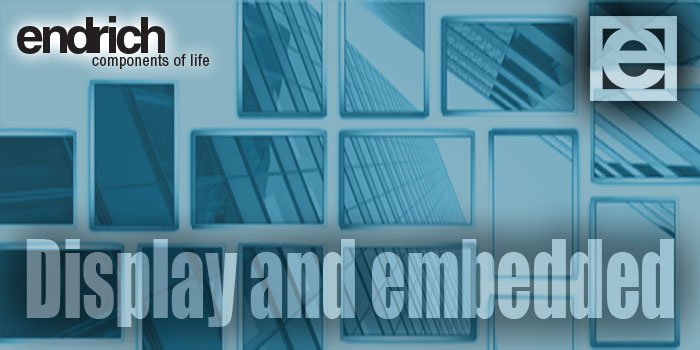
Passive Matrix OLED displays
The organic light emitting diodes (OLEDs) are getting more and more popular devices in display technologies due to their perfect bright image featuring, fast response and wide viewing angles. By today they are considered as the screens of the future. Some of the engineers however are still afraid of the high cost of this solution. The subject of this article is to show a cost effective solution, the passive matrix OLED technology in comparison with the traditional display techniques.

E-paper displays
The Epaper or EPD shortform stands for electronic paper display, which is a kind optoelectronic display technology targeting the same appearance than black ink on paper. Electronic paper is most likely more easily readable than conventional displays, due to the non refreshing stable image, the wider viewing angle, and reflecting ambient light rather than emitting its own light, just like ink printed on paper. An ideal epaper display can be read in direct sunlight without the image appearing to fade. The contrast ratio is similar or sometimes even better compared to newspaper print quality. There are several technological advantages and also disadvantages of the electronic papers, this article is made to give an overview through the displays provided by JHD, a reliable long term display manufacturer partner of Endrich.

Embedded modules and COM boards from F&S Elektronik Systeme
Embedded SystemOnModule (SOM) solutions provide simplicity and faster time to market for the end product, rather than designing custom made solution for a certain task. Embedded modules, like COM (computeronmodule) are categorized as a subtype of Single Board computers (SBC), they are more than just the microcontroller, but less than a fully equipped personal computer. Today the COM boards are usually built on a single board, and offer a compact computer system for custom applications, that require low power consumption and small physical size as it is expected by embedded systems.

Industrial TFT displays with the new iSi50® interface from Endrich
Switching between different versions of TFT displays, primarily due to the problem of connection, imposes a major design task on product developers. Since manufacturers tend to modify their product from time to time, designers often need to look for alternative suppliers to find TFT panels suiting best for the next series of their product. However, it is often impossible to find a panel featuring exactly the same physical interface layout. Similar issue occurs when a different screen size or a more exclusive design has to be adapted to the same electronics requiring in most cases PCB design change. In response to this challenge, Endrich Bauelemente Vertriebs GmbH has developed the iSi50® intelligent interface integrating all signal lines (data, backlight and touch) into a single 50 pin ribbon cable. iSi50® intelligent Standard interface – with 50 pin connector

Faytech docking station PCs in the Endrich line
Today there is a new trend to use smart displays, where the PC is embedded into the housing of the display, and the HMI can be realized by software solution, therefore, the time–tomarket can be very short. When however, there is a requirement for a large size and robust display, and in the same time enough hardware resources to serve the required control functions, it is worth to think of using a combo of a modular industrial PC and an industrial touch display. To complete this challenge Endrich offers a new family of HMI hardware, the Faytech “Docking Station PC” series. Endrich Bauelemente GmbH as one of the strong display providers on the industrial TFT market focuses to offer solutions for advanced human machine interfaces. Today’s HMI design trends no longer accept to interact using push buttons, mechanical switches or keyboards, or getting feedback through status lamps, seven segment or simple monochrome LCD displays, or via acoustics ways. Today it is basic expectation to have high resolution, even sunlight readable color TFT touch displays, with rugged, robust, but slim and professional industrial design. The applied way of solution is determined by the serial quantity, the human resources available for hardware design and the available time to market the product. One can decide to develop an HMI based on own drivers and TFT modules, which is the economic way in case of high numbers of serial production, or use embedded PCs, where the hardware interfacing of the TFT panel is solved.

New generation of Dlogic industrial touch computers
One year ago we introduced our first Touch Display Computers appearing in our delivery program, which are slim, attractive Panel PCs offering allinone human interface solution in many industrial applications. Today we have further developments to write about, a new generation of these PCs appeared with enhanced features, like new board support package, higher processing power and better connectivity to users’ hardware environment. DLOGIC’s panel PCS are not anymore just “smart displays”.

Developing human machine interfaces using smart display modules part 1.
One of the most important task of developing an interactive electronic device is the definition of the HumanMachine Interface (HMI)The chosen technology should fulfill all required controlling tasks, and in the meantime needs to be easy to implement and operate, affordably priced, rugged, usable in harsh environment and last but not leaststylish, modern in appearance. Further requirement is being able to provide an easy way of facelift in case of implementing new features or changing outlook. In this paper we introduce a possible solution, using DLOGIC’s Smart Display Modules to achieve fast time to market when designing state of the art HMI solution.

Developing human machine interfaces using smart display modules part 2.
The previous article we detailed the properties of DLOGIC’s Smart Display Modules and the possibility of designing a Human Machine Interface. In case of using conventional TFT touch displays the interface design, hardware and software debugging consumes a lot of time, better to take in consideration using a ready, economic, professionally designed smart display module and limit the HMI design to pure software development to minimize human resources and time-to-market of the finished product. After reviewing the advantages of this technology, it is time now to see how easy to implement software HMI by using a cross-platform development tool called Qt on Linux.

High end industrial displays
Since many years one can experience fight on the smart television market for our movie and living rooms, manufacturers offer wider and wider, high resolution, bright, specially shaped, elegant, and of course more and more expensive products featuring outstanding audiovisual properties. The thinner, the more curved, the less framed the set is, the higher the price consumers are ready to pay for them. The situation however is completely different at the area of high-end industrial displays. For most of the applications it is enough to have a 7”-10” screen size, much more important properties are the robust, rugged design, the ability to withstand extreme environmental circumstances, the presence of the embedded PC and the touch panel, the good outdoor visibility and readability and the industrial operating temperature range. It is also important to be able to purchase the devices for a long time in the same form factors. Sometimes there is also demand in this area for special and extreme designs, thinking of kiosk applications such as interactive information counters, shop displays, information displays at production halls or community area. Here the size of the panel as well as its thickness and weight also matter. There are many special manufacturers out there offering solutions for these market niches, but those products are not widely advertised, we may source them through solution providers, or ourselves on exhibitions, shows and via special Web shops. This article browses through the Faytech high-end industrial display solutions presented by Endrich Bauelemente Vertriebs GmbH on industrial expos such as Electronica and Embedded World exhibitions.
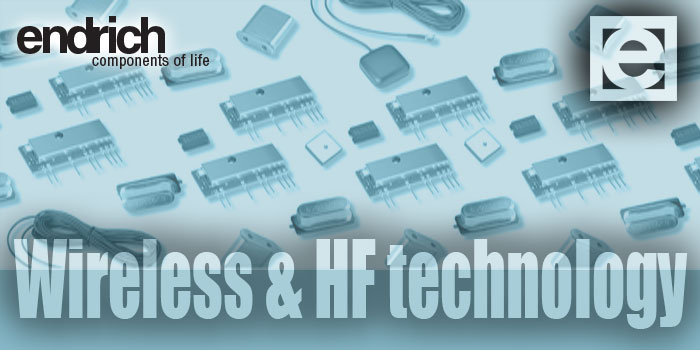
Chip antennas for navigation applications
The satellite navigation is a system of satellites providing autonomous global geo-spatial positioning (longitude, latitude and altitude data) by emitting radio signals for electronic receivers located on the Earth, sea or air. Lately there are several systems with global coverage, the NAVSTAR Global Positioning System (GPS), the Russian GLONASS system and some of the systems are in development process, like the Chinese COMPASS, and the European Unions’s GALILEO system. Huge number of receiver devices are in use or in design phase, where the special antennas have key role in smooth operation.

GNSS (Global Navigation Satellite system) receivers
Global navigation is becoming more and more standard in the traffic, cars are equipped with ex-factory or aftermarket receivers, aircrafts, ships and boats are using GNSS to navigate and also the precision agriculture requires this technology to navigate the heavy equipments like harvesters in order to define the yield map of the area being harvested. GNSS is the generic name of SAT based navigation systems that are providing autonomous geo-spatial positioning. There are number of networks that use their own satellites in combination with the associated earth stations in order to transmit correct positioning and timing data. All these systems that are global are collected under the name of GNSS. We would like to shortly show them in this article as well as some special devices, that could be used in receiver applications, like smart antennas, complete GNSS/TMC modules and receivers, being able to use the advantage of interoperability between different systems in order to maximize the performance of the navigation.

SiTime MEMS Oscillators
Micro ElectroMechanicalSystems (MEMS) incorporate nanotechnology in the electro-mechanics. Miniaturized mechanical and electro-mechanical elements under the control of integrated microelectronics are encapsulated into a small vacuum chamber forming complete systems – that is the definition of MEMS. A number of functional elements, like sensors, actuators can be realized as MEMS transducers, devices that convert energy from one form to another. In the case of micro-sensors, the device converts a measured mechanical signal into an electrical signal. The possibilities provided by the MEMS technology by means of downsizing, cost effectiveness of the applied production methods open new areas of usage. One of these areas is the timing with MEMS based resonators that are tiny structures vibrating at high frequencies. This article will give overview through leading manufacturer SiTime’s devices and technologies.

GSM technology in industrial applications – GSM, UMTS or LTE modules
Today, such notions as IoT, Smart Home and Industry4.0 become popular. Behind each of these names, there is a complex network of intelligent devices – sensors, data collection and evaluation modules, medical electronics, or even security systems, – operating in industrial environment, all featuring communication over the Internet.

Live NB-IoT test system from Endrich on Electronica 2018
Endrich, one of Europe’s designinhouse electronic component distributor is going to present a live NBIoT test system on Electronica 2018 inMunich. Networked objects such as smart devices contain a kind of sensor and a communication module that connects them to the Internet of Things. How can we achieve an economical, technically matching and standardized network solution – “The Right Network”?

SiTime MEMS Oscillators
Micro Electro-Mechanical Systems (MEMS) incorporate nanotechnology in the electro-mechanics. Miniaturized mechanical and electro-mechanical elements under the control of integrated microelectronics are encapsulated into a small vacuum chamber forming complete systems – that is the definition of MEMS. A number of functional elements, like sensors, actuators can be realized as MEMS transducers, devices that convert energy from one form to another. In the case of micro-sensors, the device converts a measured mechanical signal into an electrical signal. The possibilities provided by the MEMS technology by means of downsizing, cost effectiveness of the applied production methods open new areas of usage. One of these areas is the timing with MEMS based resonators that are tiny structures vibrating at high frequencies. This article will give overview through leading manufacturer SiTime’s devices and technologies.
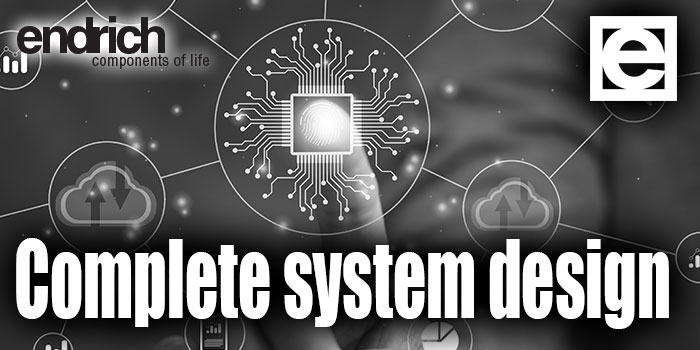
Endrich IoT Infrastructure – Endrich Cloud Database Service and Related Hardware Development
A major challenge we face today is digitalization of industrial processes, extending machinery with low power, feature rich microcontroller-based electronics to collect sensor readings and forward data with LPWA communication channels to a Cloud Database in order to build up the “BIG DATA” - the knowledge base of the future. A mass of sensor readings needs to be organized into central databases for future processing so as to meet the expectations of Industry 4.0. The Internet of Things, or IoT provides the ecosystem to deal with this challenge. We review these potentials based on the IoT infrastructure system developed mainly for demonstration purpose by Endrich GmbH, a leading electronic spare part distributor in Europe, by showing an example how to work with a modem using Narrow-Band IoT technology and introducing the cloud based database service which was created by the company engineers to help IoT developers at the customers.

Endrich IoT infrastructure - Endrich cloud database service and related hardware development
A major challenge we face today is digitalization of industrial processes, extending machinery with low power, feature rich microcontrollerbased electronics to collect sensor readings and forward data with LPWA communication channels to a Cloud Database in order to build up the “BIG DATA” – the knowledge base of the future.

E-IoT platform 2021
A major challenge we face today is digitalization of industrial processes, extending machinery with low power, feature rich microcontroller-based electronics to collect sensor readings and forward data with LPWA communication channels to a Cloud Database in order to build up the “BIG DATA” - the knowledge base of the future, and the elementary food of Artificial Intelligence. A mass of sensor readings needs to be organized into central databases for future processing, so as to meet the expectations of Industry 4.0. The Internet of Things (IoT) provides the ecosystem to deal with this challenge.

E-IoT hardware and software ecosystem to support IOT development and convert conventional equipment into connected SMART devices - Part 1
A major challenge industry faces today is the digitalization of conventional processes, extending machinery with low power, feature rich microcontroller-based electronics to collect sensor readings, and forward data to a Cloud Database by using some kind of (wireless) communication technology. Like this, it is possible to convert conventional devices to connected (SMART) devices, which report their operational and environmental parameters into Cloud Database making possible to support cost-savings, simplicity and operational safety. Smart features of devices support predictive maintenance, optimize energy consumption, and support remote monitoring. Our E-IOT eco-system helps to enter this industry by offering hardware and software service evaluation platform to developers of such IOT devices as well as offer ready solution to convert conventional into “smart” devices.

E-IoT hardware and software ecosystem to support IOT development and convert conventional equipment into connected SMART devices - Part 2
One concept to cover the basics of IoT. Not a dream but a real platform developed by Endrich to contribute to a smart and connected world. The Endrich IoT platform concept combines sensors, intelligence, wireless technology and cloud connection with open source support.

Connected "smart" devices - Applying E-IoT in practice - The smart doorbell project
Since Bob Rafelson’s iconic film „The Postman Always Rings Twice” we all know that postmen never gives up, unfortunately not as in reality. You all must have experience that missing the long-expected magic doorbell may result in a waiting a long queue at the post office late evening after work to pick up the important parcel or registered mail. What if your doorbell would generate a pop up message on your mobile device or you would get an SMS about someone’s waiting in front of your door? Of course, today in the era of IoT it is all possible, such as an intelligent garbage bin telling if it is full, or the flower in the garden would cry for irrigation, your pond reporting critical water level in the hot summer…Let us see how we can call the narrow band LTE communication technology for help.

E-IoT success strories in 2022
In this paper we are a little out of the habit and instead of presenting technical details, we want to talk a little bit about the success of Endrich's development team in recent weeks and months at domestic and international exhibitions and forums. The 2020 debut of the E-IoT concept at the EmbeddedWord 2020 exhibition in Nuremberg has already predicted that the engineering community in the field of IoT will welcome the introduction of a complete test infrastructure to support their work in terms of components, turnkey solutions and software services. This has been deatiled in a number of white papers in SEEIM magazine as well. Based on this experience, the management of Endrich GmbH has opened the way for the establishment of the Budapest Competence Center and the further development of the concept, which will enable product development in the near future at a conventional distribution company operating originally on the field of electronics components. At the Hungexpo Industry Days exhibition, which was held in October 2020 being the first to allow physical appearance after the pandemic, Endrich “won” grand prizes in two categories. Of course, the developments then continued with steam power, and we also wanted to scale ourselves internationally.

Endrich Bauelemente Vertriebs GmbH introduces the award winning E-IoT infrastructure on the International Plovdiv Technical Fair
In the previous issues of Engineering Review Magazine we have been talking a lot about the multi-award winning IoT Eco-System of Endrich GmbH, the E-IoT platform, which actually supports our major offering to our partners described by or 2022 year slogan “We MAKE YOUR DEVICE SMART”. Smart features of devices support predictive maintenance, optimize energy consumption, and support remote monitoring. Our E-IOT eco-system helps to enter this industry by offering hardware and software service evaluation platform to developers of such IOT devices as well as offer ready solution to convert conventional into “smart” devices. Now in September 2022, we are going to bring this concept to Bulgaria by exhibiting on the International Technical Fair in Plovdiv, as the next stopover of our international E-IoT RoadShow ‘22

Endrich Bauelemente Vertriebs GmbH introduces the award winning E-IoT infrastructure on the International Plovdiv Technical Fair
In the previous issue of the magazine we have been talking about our participation on the 76. International Technical Fair in Plovdiv, where we were about to introduce our multi-award winning IoT Eco-System, the E-IoT platform, which actually supports our major offering to our partners described by or 2022 year slogan “We MAKE YOUR DEVICE SMART”. Smart features of devices support predictive maintenance, optimize energy consumption, and support remote monitoring. But not only that, we can call this ecosystem to support our everyday healthy life. As the Plovdiv fair was for us a special occasion, here we have introduced our new IoT device, the so called cityBox device, which is an air quality detection device, sending the characteristics of the air quality constantly to a Cloud database to provide local authorities with reliable data automatically with samoling and uploading data in every two minutes in 7/24 operation.

The E-IOT Mesh with the new cityBox device as a gateway
In the previous issue of the magazine, we have been talking our multi-award winning IoT Eco-System, the E-IoT platform, which actually supports our major offering to our partners described by our last year slogan “We MAKE YOUR DEVICE SMART”. Smart features of devices support predictive maintenance, optimize energy consumption, and support remote monitoring. But not only that, we can call this ecosystem to support our everyday healthy life. By introducing a new IoT device, the so called cityBox, which is an air quality detection device, sending the characteristics of the air quality constantly to a Cloud database. Here we have chosen a new slogan, “We take care of the environment” as our goal is to provide local authorities with reliable data of the city air quality automatically with sampling and uploading data in every two minutes in 7/24 operation. But not only that, cityBox is also able to collect data of surrounding wireless smart sensors such as water level sensors, soil moisture detectors or any other similar devices without the possibility to connect directly to cloud. cityBox collects all their data and sends them over the cellular network ( NB-IoT, LTE-M or 2G).

E-smart Fridge Concept
Endrich works hard to offer possibility to its potential customers to call IoT for help to connect their conventional devices into networks and collect different data, which can then be used in various area such as marketing, predictive maintenance or remote surveillance. We would like to make our promise fulfilled: „We make Your device Smart”. In this writing we are going to introduce how we do it with industrial refrigerators

Using low power, wireless ad hoc local mesh network technology with cellular gateway to enhance smart sensor solutions.
Endrich’s award winning E-IoT ecosystem offers a possible solution to transfer smart sensors’ data directly to Cloud using NB-IoT/LTE-M cellular technologies. This is quite a perfect solution in general converting conventional devices into “Smart”, in case of relatively small number of sensors in an application. Integrating NeoCortec’s low power wireless ad hoc mesh network technology to the Endrich IoT Ecosystem offers a smart sensor local networking solution, which goes with highly scalable, long service life, independent, battery driven set of nodes. Instead of direct sensor to cloud communication with several exits to the internet, it is enough to have an industry safe, sub-gigahertz local mesh with a single gateway. This solution supports amongst others predictive maintenance, environmental parameter monitoring and security surveillance of industrial equipment at much lower cost, higher reliability and elevates the robustness of the sensor network in harsh environment.

How to set up a IoT network to get associated data from sensor to Cloud?
In this paper we are going to discuss the different possibilities to collect sensor data and get them into Cloud using the E-IoT ecosystem. One way of the data transfer is using smart sensors directly connected to the Internet, but there are many cases where a local wireless network of sensors with a single Internet gateway is a better and a more economical solution. We will discuss these options illustrated by the E-IoT ecosystem, which offers cellular LPWAN connectivity for direct sensor - database communication, and recently uses NeoCortec’s revolutionary NeoMesh protocol for having an ad-hoc, real low power, sub-GHz mesh WLAN to collect the data locally and gateway them to Internet from a single access point.
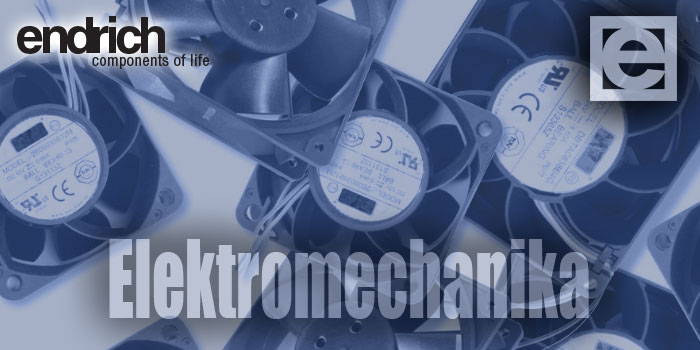
Design of system cooling using DC axial fans
Cooling has a key role in today’s electronics, as the lifetime expectancy of passive and active components is highly dependent on the way of transferring the heat generated by their electric current towards the surrounding environment. In some cases the properly designed PCB and using a heatsink provides adequate surface to remove the heat emitted by the components, in other cases the system needs active cooling e.g. by forced flow of air. The design of cooling is often not part of the functional design of the electronic devices, however this has to guarantee the reliable primer functionality. Usually a fan used without proper selection may result in oversized mechanical measures, or - in worst case - undersized cooling efficiency. Today’s miniaturization trends make not possible to unnecessarily enlarge enclosure size, while the competition does not allow produce unreliable products. Therefore cooling design cannot be started early enough, just like without proper circuit protection, no electronics device can provide its primer functionality for long time without sufficient cooling. Our article is about some important selection criteria of the proper fan depending on the application conditions.